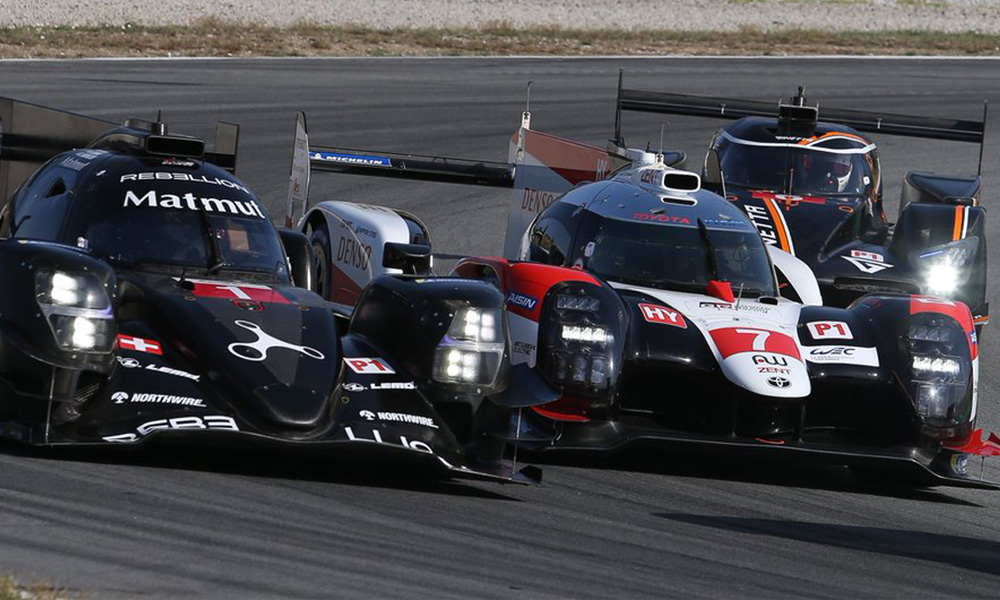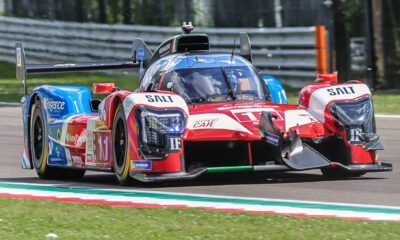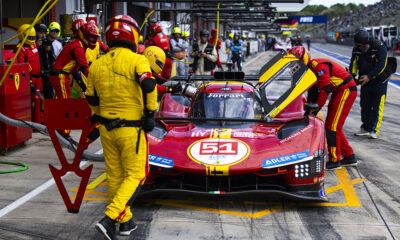
Photo: James Moy/Toyota
The new success handicap system designed to even out the FIA World Endurance Championship LMP1 class should give “opportunities” for non-hybrid cars to win races, according to ACO sporting director Vincent Beaumesnil.
Officially revealed on Monday, the system aims to create closer competition between the Toyota TS050 Hybrids and the non-hybrid offerings from Rebellion Racing and Team LNT.
The premise is that the size of each penalty increases as the points difference between two cars increases, although it’s understood that lower-ranked cars can also be given performance concessions to catch up.
Penalties will be applied based on weight, power and fuel-based parameters, while Beaumesnil assured that the WEC is “very close” to having the full scope of the system laid out.
“We have a system that’s complex and simple at the same time. There are technical details that still need to be fixed but the principle is very simple,” he told Sportscar365.
“The more you have points, the more we are going to reduce your performance. The less points you have, the more we will help your performance.
“It’s good because there’s no way to make a strategy unless you score zero points every weekend.
“You cannot be slow on purpose in one race to have a better performance in the next race because it’s just the status of the championship that makes the balance.
“We have made simulations. What we know today, we have a theoretical distribution of wins that works very well with that.
“It allows redistributing the competitiveness of all cars, especially non-hybrid cars, to have opportunities of winning races.”
Beaumesnil said success handicaps will not be in place for the season-ending 24 Hours of Le Mans, due to the fact that full-season teams could manipulate their results throughout the season in order to get increased performance.
“We have reached a very good EoT at Le Mans so we have the experience now and the package to have a very competitive EoT there,” he said.
“As we have aligned parameters related to pit stop time and stint length, it’s a shame some [LMP1] teams have stopped because I think it’s really the right year to compete.
“With one year of experience gained last year and the progress they have all done, I think this year is a proper opportunity for them.”
Toyota Active in Producing New System
Beaumesnil praised Toyota for being “very productive” in helping to formulate the success handicap, which has subsequently been approved by Rebellion and Team LNT.
Explaining the system in more detail, Toyota’s technical director Pascal Vasselon said that penalties would be applied per point, while exact amounts for certain parameters would be based on the length of the next circuit on the calendar.
“It doesn’t create strange sporting strategies because you want to score points to progress in the championship, and as soon as you score the points you get a penalty per point,” he said.
“The penalty should be around .006 seconds per championship point, per kilometer. If, between first and second you have seven points, you calculate the difference.
“For a 5 km track, the car that wins Silverstone will have two-tenths, and then [a] bigger [advantage] for the other tracks.”
Vasselon added that a system covering the entire LMP1 grid is more sensible than a system that only takes the top three positions into account, as used in the ELMS GTE ranks.
“In any case, if the top three cars were affected, some people may have an incentive to finish fourth,” he said.
“This kind of system is somehow wrong because you create a step between P4 and P3, and you can win the season with P4 finishes.
“In the system we have proposed, every single championship point matters, so you have no incentive for a strategy.”
Rebellion Approaching with Cautious Optimism
When asked about success handicapping, Rebellion CEO Calim Bouhadra said that he still has some reservations despite this latest move to even out the LMP1 field.
“I’m very enthusiastic about this but the EoT took nine months to start to be efficient,” he told Sportscar365.
“I want to trust the ACO and the WEC and the team of engineers, but who can give me the guarantee?
“What is the efficiency of this ballast? We don’t know. It’s better because there’s something new to help. But it took us lots of months.”
John Dagys contributed to this report.


























